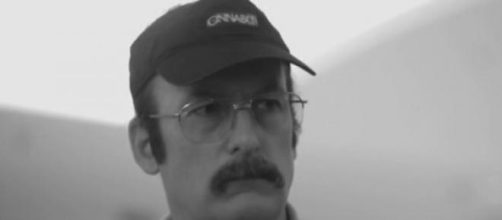Last Sunday, the American TV channel AMC aired the first episode of the long-awaited "Breaking Bad" spin-off, with Walter White's cynical lawyer Saul Goodman (Bob Odenkirk) as main character. The next episode of "Better Call Saul" was broadcast immediately on Monday, giving the creators more time to present a fuller outline of the new story and of the protagonist himself, who despite being an interesting character, was originally rather flat.
In line with earlier announcements, the series' action takes place six years before Walter White meets Saul Goodman, who becomes his accomplice in the dirty business.
Meanwhile, the premiere episode's first scene makes reference to the lawyer's fate following his escape from Albuquerque and his change of identity. The mouthy, energetic attorney is now working in a Cinnabon chain bakery in Nebraska and spends his evenings apathetically staring at the TV screen.
Admittedly, the visual aspect of "Better Call Saul" first episodes is remarkable. Vince Gilligan, the creator and producer of 'Breaking Bad' and now also of its spin-off, is well-known for his penchant for playing with light and shadow, aimed at depicting the protagonists' state of mind. Hence the beautiful shots in which Saul Goodman or other characters caught in moments of moral dilemma have their faces partially covered by darkness.
Nevertheless, after the depressing opening, the action immediately moves back to New Mexico, to the beginnings of Saul Goodman's career, when the lawyer was still known as Jimmy McGill. This younger, more naive version of Saul is a hack lawyer trying to make ends meet, serving as public defender by day and in the evenings waiting for potential clients in a tiny office at the back of a Chinese nail parlor.
Despite Vince Gilligan's earlier comments that "Better Call Saul" will be "85 percent of drama and 15 percent comedy," the first two episodes are definitely a comedy, sometimes bordering even on slapstick. Unlike Walter White, Jimmy McGill is capable of slipping out of dangerous situations by way of negotiation and chicanery.
But his clash with the Albuquerque criminal underground germinates a new idea on how to push his career forward and the young lawyer makes his first step on the path towards becoming the corrupt Saul Goodman.
One thing that spoils the good impression left after watching the premiere episodes of "Better Call Saul" are the aggressive, overly direct references to 'Breaking Bad.' Gilligan insistently tries to implant in people's minds that the new series is a prequel to "Breaking Bad", as if he was uncertain whether it can defend itself on its own. Well known characters, such as Mike Ehrmantraut (Jonathan Banks) or Tuco Salamanca (Raymond Cruz) are immediately brought into action. Furthermore, in the first scene Saul Goodman even physically resembles Walter White, hiding in his new life behind a lush mustache and a pair of characteristic, rectangle wire-rimmed glasses.
Still, whichever way you look at it, "Better Call Saul" is a very aptly constructed "Breaking Bad" spin-off and Saul Goodman's tragicomic character seems to be an inexhaustible source of ideas for the next episodes. Meanwhile, the fact that the series' premiere attracted a 6.9 million audience in the US, five times greater than "Breaking Bad" debut in 2008, should satisfy the creators' ambitions at least for now.

